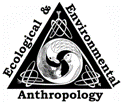Wildlife Damage Management, Internet Center for

Ecological and Environmental Anthropology (University of Georgia)
Date of this Version
November 2006
Abstract
The human-nonhuman primate interface is a core component in conservation and an emerging area of discourse across anthropology. There is a growing recognition of the relevance of long-term sympatry between human and nonhuman primates. Until recently these relationships received limited attention in the anthropological literature and in the primatological construction of models for the behavior and evolution of primate societies. Most socioecological investigations into primate groups and human populations do not incorporate their interactions (beyond predation or crop raiding), potential pathogen sharing, or the role of the anthropogenically impacted environment. Current relationships between humans and nonhuman primates are generally assumed to be rooted in conflict over land use and relatively recent, and thus have limited evolutionary and long term ecological impact. To date, too few studies have attempted to incorporate specific aspects of human cultural conceptualizations of nature and nonhuman primates into explanations/examination of either human or nonhuman primate behavioral and ecological patterns. Ongoing research projects and a growing number of publications demonstrate that long-term sympatry between human and nonhuman primates results in a complex web of behavioral, ecological, epidemiological, and economic relationships, suggesting a need for increased attention by anthropologists to this topic. This essay introduces a set of articles in this issue of Ecological and Environmental Anthropology that illustrate theoretical and practical considerations suggesting the need for increased focus of the anthropological gaze towards the human-nonhuman primate interface.

